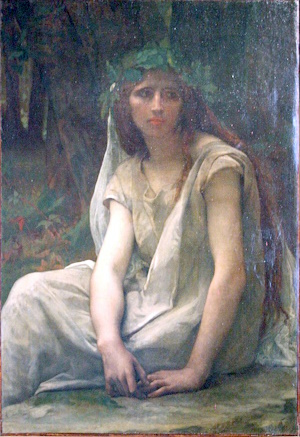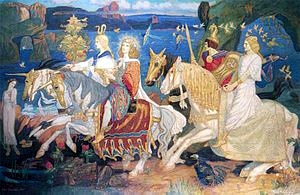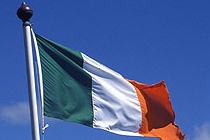Irish Goddess Banba (Banbha)

Banba’s Crown is the northernmost point on the Irish mainland located at Malin Head, Inishowen, County Donegal (Irish: Cionn Mhálanna, Inis Eoghain, Contae Dhún na nGall). Its name pays homage to the goddess Banba or Banbha. According to Irish legend, Banba was one of the three goddesses who protected Ireland along with her sisters, Ériu and Fódla. They are members of the Tuatha Dé Danann, Celtic pre-Christian gods with supernatural ability.
According to the Lebor Gabála Érenn, first compiled in the 11th century AD and intended to be a history of Ireland. The Milesians, who are the final race to settle in Ireland, came into contention with the Tuatha Dé Danann. On their way to Tara, the ancient ceremonial site and seat of power, the Milesians are met on three mountains by Banba, Fódla and Ériu. Each goddess asks for the land to be named after her. This is agreed to by Amergin, who is said to have been a bard and judge for the Milesians. As a result they give permission for Amergin and his people to settle in Ireland.
At Tara, the Milesians meet the three kings of the Tuatha Dé Danann, Mac Cuill, Mac Cecht and Mac Gréine. A three-day truce is agreed, during which the Milesians must stay a distance of nine waves from the Irish coast. However, once the Milesians again attempt to sail towards shore the druids of the Tuath Dé conjure up a great magical storm wind that prevents them. However, Amergin recites an invocation calling upon the spirit of Ireland to help them, this came to be known as The Song of Amergin. In doing so he was able to part the storm and bring the ships safely to Ireland.

A number of battles were subsequently fought, but in the end the Milesians were victorious and the three kings of the Tuatha Dé Danann were eventually killed. After this the Milesians and the remaining Tuath Dé came to an agreement. The Milesians took the world above, while the Tuath Dé took the world below (i.e. the Otherworld) and they entered the sídhe mounds. The promise to the goddesses Banba, Fódla and Ériu was kept. So that the modern Irish Éire, which is the name for Ireland, evolved from the Old Irish namd of the goddess Ériu. Whilst Banba and Fódla are still sometimes used as poetic names for Ireland with all three also being interpreted as goddesses of sovereignty. Meanwhile, the highest elevation in the most northerly point in mainland Ireland continues to be named after the mystic queen Banba.
Content type:
- Irish
Language:
- English





